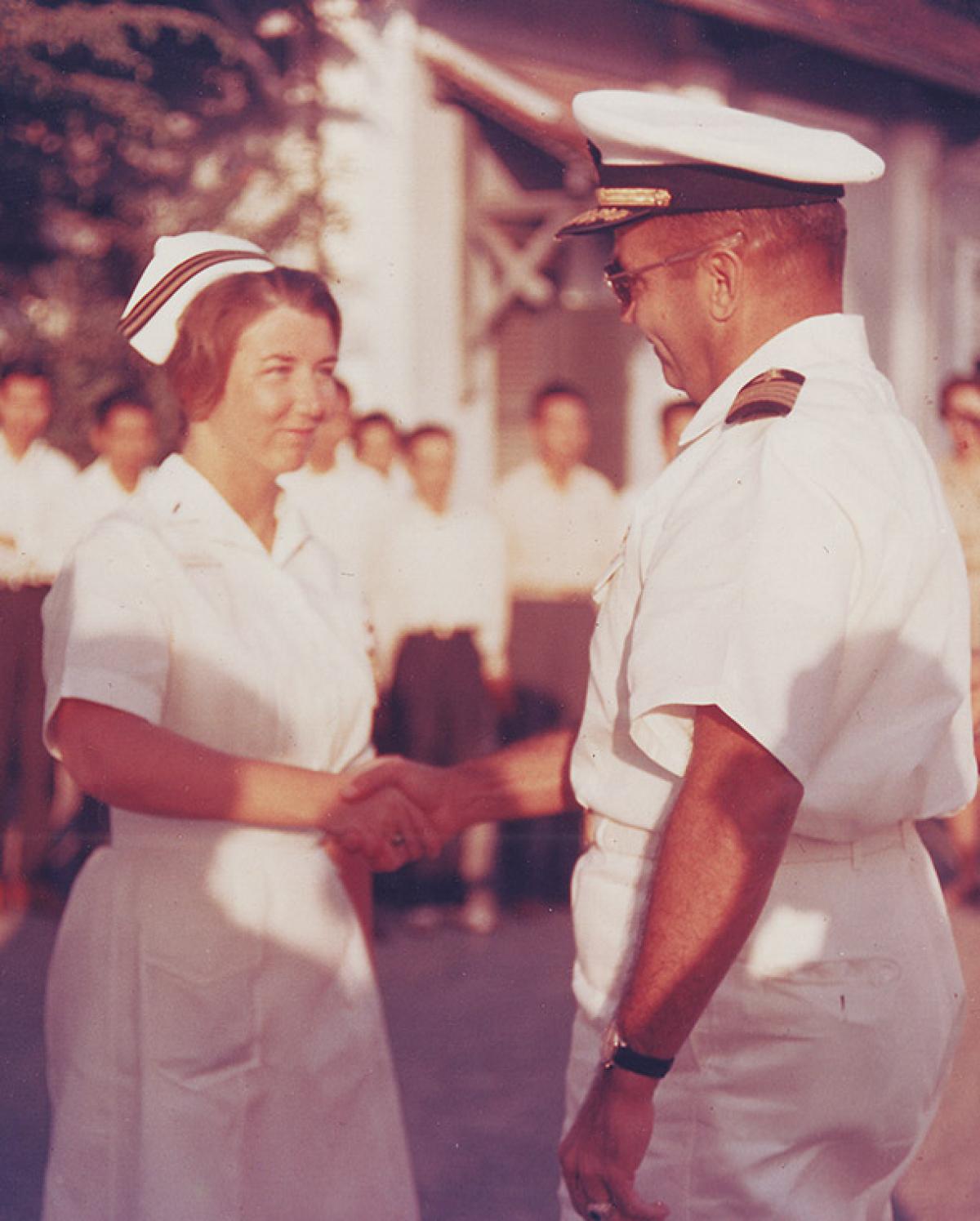Clad in service dress blues with heels, Lieutenant (junior grade) Ann Darby Reynolds sat in the gloom of a C-130 Hercules, squashed between two soldiers. In her left hand she held a paper cup to catch the droplets of condensation that dripped from the aircraft’s overhead. Her relief was palpable when the lumbering plane’s wheels touched down, ending her long journey from Travis Air Force Base in California.
As she made her way down the sloping ramp at the rear of the aircraft, a blast of furnace-like air—replete with strange new smells—welcomed her to a place most Americans had never even heard of (yet). The year was 1963, and Lieutenant Reynolds had made the trip that millions of Americans would subsequently make over the next decade. She had come to Tan Son Nhut Air Base just outside the capital city of Saigon in a faraway place called South Vietnam.
Over the coming months, Reynolds worked as a nurse in challenging conditions at Naval Station Hospital Saigon. Nine doctors, eight nurses, and seven hospital corpsmen staffed the hospital, a converted five-story apartment building with very small rooms and no operating elevators. Duty for the nurses could last as long as 36 hours, and living conditions at the Brink BOQ (formerly a French colonial hotel in downtown Saigon that had been converted to an American bachelor officers’ quarters) were less than luxurious. And there were reports that insurgents known as “Vietcong” had offered a $150 bounty to anyone able to harm the American nurses.
Reynolds had been in country for nearly a year when, on Christmas Eve 1964, she and her three roommates—Lieutenants Ruth Mason, Frances Crumpton, and Barbara Wooster—attempted to lift their holiday spirits by giving their cleaning lady a wrapped present. Reynolds had gone to the window in their quarters to watch as the Vietnamese woman made her way toward the security gate to head home. Suddenly, Reynolds was thrown backward by “the strongest force I’d ever felt in my life.” That force had been delivered by Vietcong insurgents who had detonated 200 pounds of explosives hidden in the trunk of a car they had left in the car park beneath the hotel.
Dazed and bleeding, Reynolds pulled herself to her feet. Brushing away shards of broken glass as she left her quarters, she made her way down to the courtyard and began administering first aid to the many injured. She then boarded one of the ambulances to get to the hospital—to treat, not to be treated. When she arrived at the hospital, she and her roommates—all wounded by the blast—began treating the many injured that were “coming in like an assembly line.”
While she was working away, one of the corpsmen noticed that Reynolds’ lower leg was bleeding profusely. Refusing his admonition that she needed to stop and get treatment for herself, she told the corpsman to wrap her leg as best he could while she continued to work on the incoming injured.
In the early hours of Christmas Day, the situation stabilized enough for her to get needed stitches for her wounded leg. When she later returned to her room at the BOQ, she was amazed that she had survived. The entire ground floor had been destroyed and the floor of the room next to hers had collapsed.
The final toll has never been completely clear, but the most reliable sources hold that two Americans were killed and 58 were wounded in that early incident in a long and bloody war. Lieutenant Reynolds and her three roommates became the first women to receive Purple Hearts during the Vietnam War.



